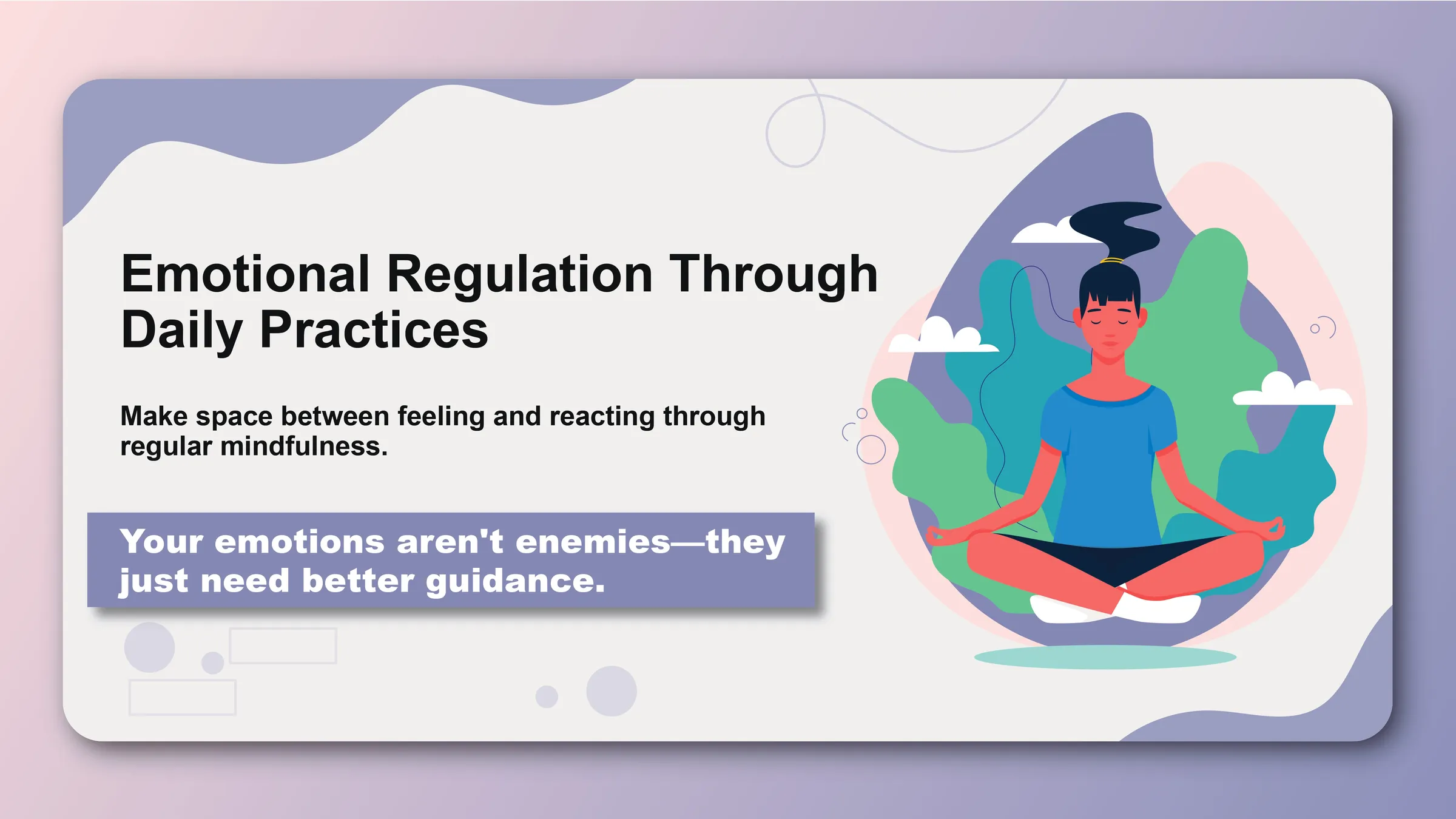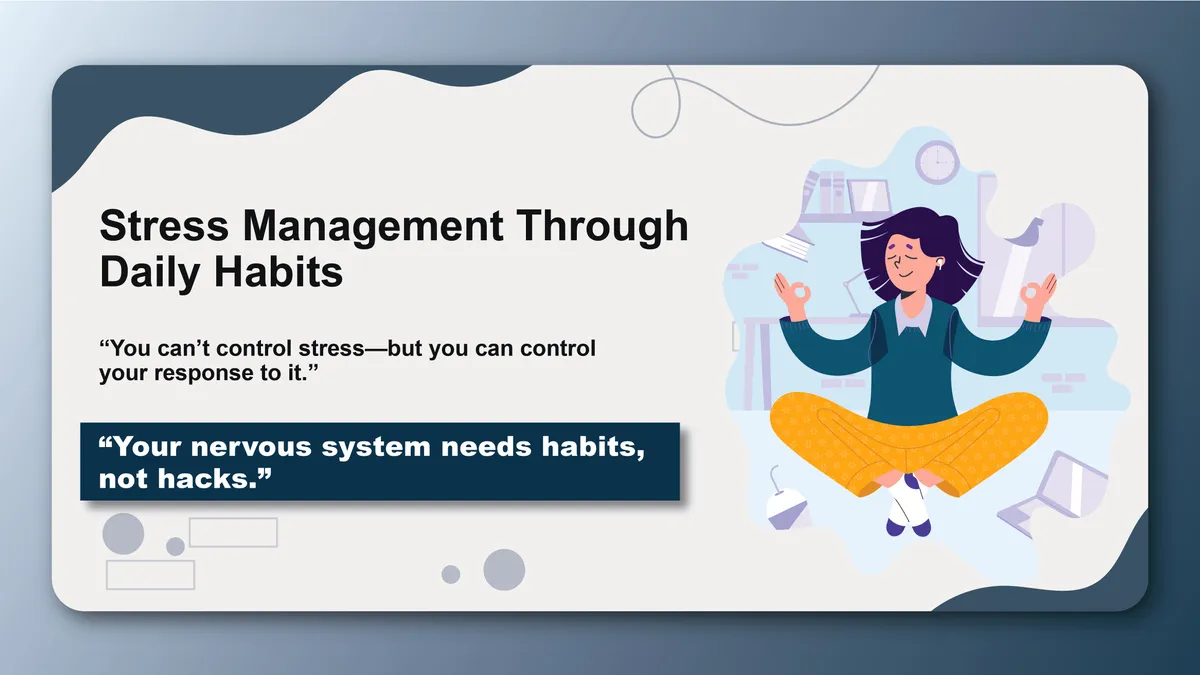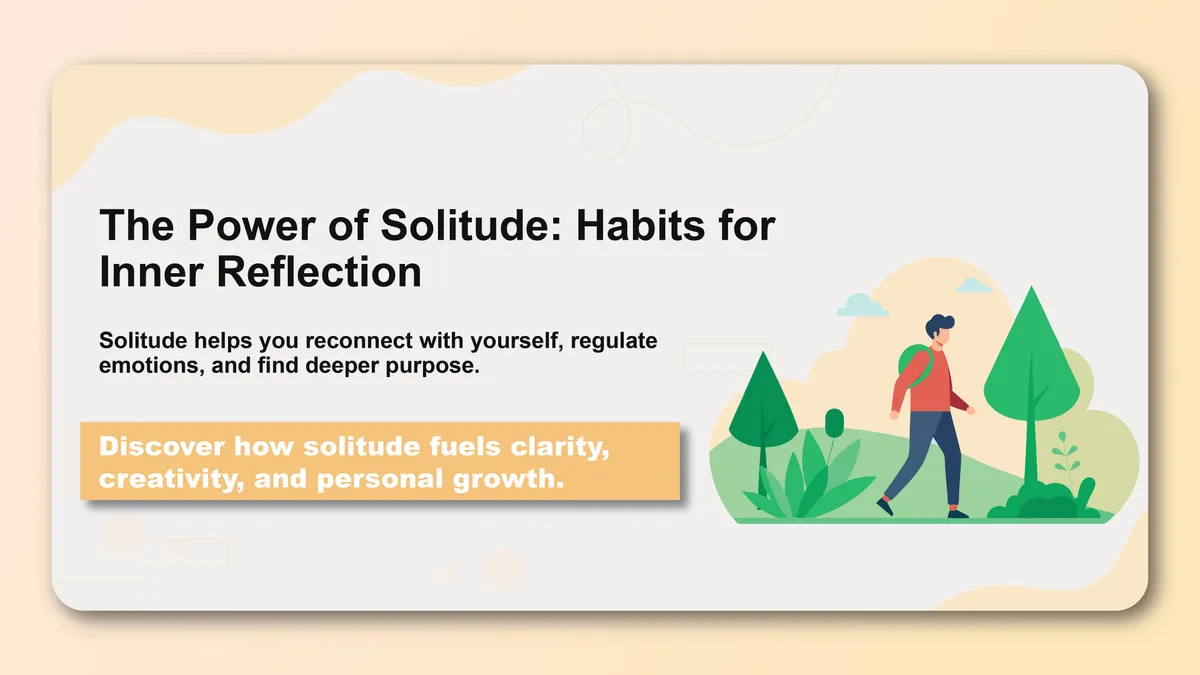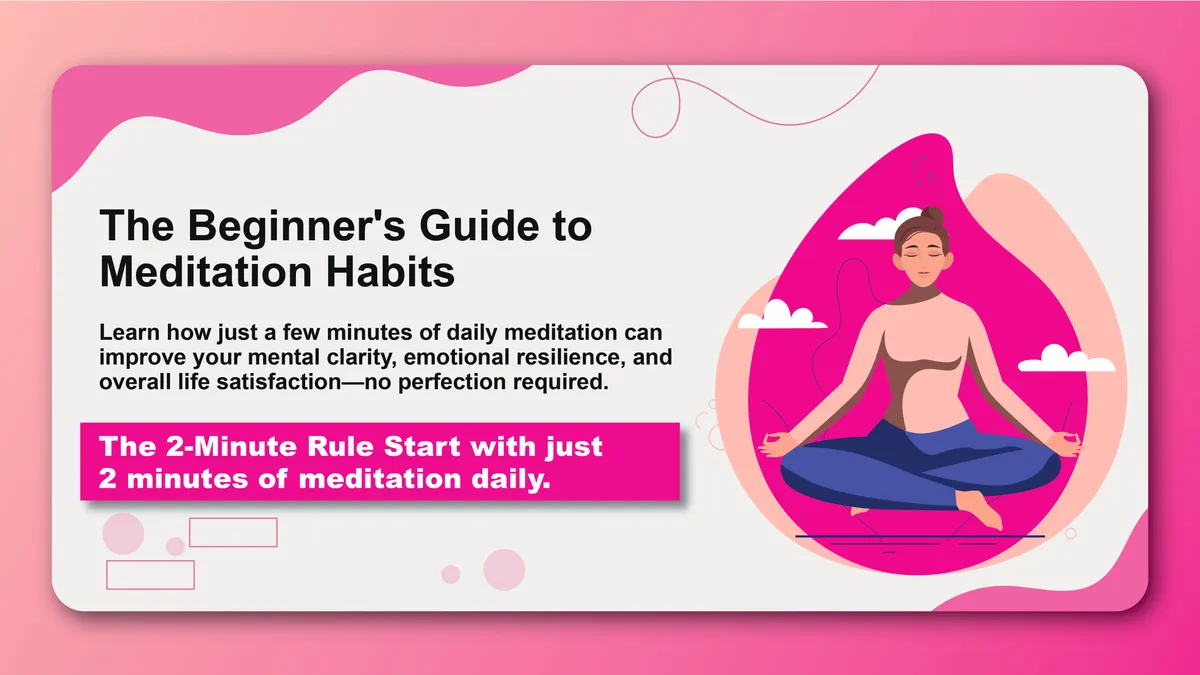Emotional regulation is one of the most crucial skills for navigating life's challenges and maintaining mental well-being. It's the ability to understand, manage, and respond to your emotions in healthy and constructive ways, rather than being overwhelmed or controlled by them. While some people seem naturally emotionally balanced, emotional regulation is actually a skill that can be developed through consistent daily practices.
Our emotions serve important functions—they provide information about our needs, help us make decisions, and motivate us to take action. However, when emotions become overwhelming or dysregulated, they can interfere with our relationships, work performance, and overall quality of life. The good news is that with the right practices and habits, we can learn to work with our emotions rather than against them.
Emotional regulation isn't about suppressing emotions or trying to feel happy all the time. Instead, it's about developing the capacity to experience emotions fully while maintaining choice in how we respond to them. It's about creating space between stimulus and response, allowing us to act from wisdom rather than pure impulse.
The practices that support emotional regulation are simple but powerful. They include mindfulness techniques, cognitive strategies, physical practices, and social connections. What makes these practices effective is their integration into daily life, creating a foundation of emotional stability that helps us navigate both everyday stressors and major life challenges.
When we develop strong emotional regulation skills, we experience less anxiety and depression, have better relationships, make clearer decisions, and feel more confident in our ability to handle whatever life brings. These skills also contribute to better physical health, as chronic emotional stress takes a significant toll on our bodies.
Understanding Emotional Regulation
The Science of Emotions
Emotional Processing in the Brain Emotions originate in the limbic system, particularly the amygdala, which processes threats and triggers fight-or-flight responses. The prefrontal cortex, responsible for rational thinking, can learn to regulate these emotional responses through practice.
The Emotion Regulation Network Neuroscience has identified specific brain circuits involved in emotional regulation, including connections between the prefrontal cortex and limbic structures. These circuits can be strengthened through mindfulness and other regulation practices.
Neuroplasticity and Emotional Change The brain's ability to rewire itself means that emotional regulation skills can be developed at any age. Regular practice creates new neural pathways that support more balanced emotional responses.
The Role of Neurotransmitters Emotions are influenced by neurotransmitters like serotonin, dopamine, and GABA. Certain practices can naturally support the production and balance of these brain chemicals.
Components of Emotional Regulation
Emotional Awareness The first step in regulation is recognizing and identifying emotions as they arise. This includes noticing physical sensations, thoughts, and behavioral impulses associated with different emotions.
Emotional Acceptance Rather than fighting or judging emotions, healthy regulation involves accepting them as natural and temporary experiences. This acceptance paradoxically reduces emotional intensity.
Cognitive Reframing This involves changing how we think about emotional situations, looking for alternative perspectives, and questioning automatic thoughts that may be fueling negative emotions.
Response Flexibility Healthy emotional regulation provides multiple options for responding to emotions, rather than being locked into automatic patterns of reaction.
Daily Practices for Emotional Regulation
Mindfulness-Based Practices
Present-Moment Awareness Regular mindfulness practice helps you observe emotions without being overwhelmed by them. This creates space between feeling and reaction.
How to Practice:
- Set aside 10-15 minutes daily for mindfulness meditation
- Focus on breath, body sensations, or sounds
- When emotions arise, notice them with curiosity rather than judgment
- Practice returning attention to the present moment
Body-Based Awareness Emotions create physical sensations in the body. Learning to notice these sensations helps you catch emotions early and respond skillfully.
How to Practice:
- Regularly scan your body for tension, warmth, or other sensations
- Notice where different emotions show up in your body
- Use body awareness as an early warning system for emotional states
- Practice relaxation techniques when you notice physical tension
Mindful Breathing The breath is intimately connected to the nervous system and can be used to regulate emotional states.
How to Practice:
- Practice 4-7-8 breathing: inhale for 4, hold for 7, exhale for 8
- Use box breathing: inhale for 4, hold for 4, exhale for 4, hold for 4
- Take three deep breaths when you notice emotional activation
- Use breath awareness during stressful situations
Cognitive Strategies
Thought Observation Learning to observe thoughts without automatically believing or acting on them is crucial for emotional regulation.
How to Practice:
- Notice when you're having emotionally charged thoughts
- Ask yourself: "Is this thought helpful? Is it true? Is it necessary?"
- Practice labeling thoughts as "thinking" rather than facts
- Develop the ability to step back from thoughts and observe them
Cognitive Reframing This involves consciously changing your perspective on emotional situations to reduce their intensity.
How to Practice:
- When upset, ask: "What else could this situation mean?"
- Look for evidence that contradicts your initial interpretation
- Consider how you'll view this situation in 5 years
- Practice finding growth opportunities in difficult experiences
Emotional Labeling Putting emotions into words helps activate the prefrontal cortex and reduce emotional intensity.
How to Practice:
- When feeling strong emotions, name them specifically
- Use emotion wheels or lists to expand your emotional vocabulary
- Write about your emotions in a journal
- Share your emotional experiences with trusted friends or therapists
Physical Practices
Regular Exercise Physical activity is one of the most effective ways to regulate emotions and manage stress.
How to Practice:
- Engage in 30 minutes of moderate exercise most days
- Choose activities you enjoy to ensure consistency
- Use exercise as a way to discharge emotional energy
- Notice how different types of exercise affect your mood
Progressive Muscle Relaxation This technique helps release physical tension and calm the nervous system.
How to Practice:
- Tense and release each muscle group for 5-10 seconds
- Start with your toes and work up to your head
- Practice for 15-20 minutes daily
- Use abbreviated versions during stressful moments
Sleep Hygiene Quality sleep is essential for emotional regulation, as sleep deprivation impairs the prefrontal cortex's ability to manage emotions.
How to Practice:
- Maintain consistent sleep and wake times
- Create a relaxing bedtime routine
- Avoid screens for at least an hour before bed
- Keep your bedroom cool, dark, and quiet
Social and Behavioral Practices
Healthy Boundaries Setting and maintaining boundaries protects your emotional well-being and prevents overwhelm.
How to Practice:
- Identify your emotional limits and communicate them clearly
- Practice saying "no" to requests that drain your energy
- Limit exposure to negative news and social media
- Surround yourself with supportive, positive people
Emotional Expression Finding healthy ways to express emotions prevents them from building up and becoming overwhelming.
How to Practice:
- Talk to trusted friends or family about your feelings
- Use creative outlets like art, music, or writing
- Practice emotional expression in safe environments
- Consider therapy for processing difficult emotions
Social Connection Strong relationships provide emotional support and help regulate stress responses.
How to Practice:
- Maintain regular contact with supportive friends and family
- Join communities or groups aligned with your interests
- Practice active listening and empathy in relationships
- Seek professional help when needed
Building Emotional Regulation Habits
Creating Daily Routines
Morning Emotional Check-In Start each day by assessing your emotional state and setting intentions for emotional well-being.
How to Practice:
- Spend 5 minutes each morning noticing how you feel
- Set an intention for how you want to handle emotions that day
- Practice gratitude to start the day with positive emotions
- Do brief mindfulness or breathing exercises
Midday Reset Use midday as an opportunity to check in with your emotions and make adjustments.
How to Practice:
- Take a brief walk or do stretching exercises
- Practice deep breathing or brief meditation
- Assess your stress level and take action if needed
- Connect with a supportive friend or colleague
Evening Emotional Processing End each day by processing emotions and preparing for restorative sleep.
How to Practice:
- Journal about your emotional experiences from the day
- Practice gratitude for positive moments
- Do progressive muscle relaxation or other calming activities
- Set intentions for emotional well-being the next day
Habit Stacking for Emotional Regulation
Link to Existing Habits
- "After I brush my teeth, I will take three deep breaths"
- "Before I check my phone, I will notice how I'm feeling"
- "After I eat lunch, I will do a brief body scan"
Create Environmental Cues
- Keep a journal by your bed for emotional processing
- Set phone reminders for breathing exercises
- Use calming music or scents to trigger relaxation responses
- Create a dedicated space for mindfulness practice
Tracking and Monitoring
Emotion Tracking Keep a record of your emotional patterns to identify triggers and effective strategies.
How to Practice:
- Rate your emotions on a scale of 1-10 throughout the day
- Note what triggered emotional responses
- Track which regulation strategies work best for you
- Look for patterns over time
Stress Level Monitoring Regular assessment of stress levels helps you intervene before emotions become overwhelming.
How to Practice:
- Check in with your stress level several times daily
- Use a scale or simple rating system
- Take action when stress levels become elevated
- Practice prevention rather than just crisis management
Managing Specific Emotions
Anxiety and Worry
Grounding Techniques Use sensory-based practices to anchor yourself in the present moment.
5-4-3-2-1 Technique:
- 5 things you can see
- 4 things you can touch
- 3 things you can hear
- 2 things you can smell
- 1 thing you can taste
Worry Time Set aside specific time for worrying rather than allowing it to intrude throughout the day.
How to Practice:
- Schedule 15-20 minutes daily for worry time
- Write down concerns and potential solutions
- Outside of worry time, postpone anxious thoughts
- Focus on what you can control
Anger and Frustration
Pause and Breathe Create space between trigger and response to avoid reactive behaviors.
How to Practice:
- Take 10 deep breaths when feeling angry
- Remove yourself from the situation if possible
- Count to 10 (or 100) before responding
- Use physical exercise to discharge angry energy
Assertiveness Training Learn to express anger in healthy, constructive ways.
How to Practice:
- Use "I" statements to express feelings
- Focus on specific behaviors rather than character attacks
- Practice calm, clear communication
- Set boundaries without aggression
Sadness and Depression
Behavioral Activation Engage in meaningful activities even when you don't feel like it.
How to Practice:
- Schedule pleasant activities daily
- Break large tasks into smaller, manageable steps
- Connect with supportive people
- Engage in activities that provide a sense of accomplishment
Self-Compassion Treat yourself with the same kindness you'd show a good friend.
How to Practice:
- Notice self-critical thoughts and replace them with kind ones
- Practice self-forgiveness for mistakes
- Acknowledge that suffering is part of the human experience
- Treat yourself with gentleness during difficult times
Advanced Emotional Regulation Techniques
Dialectical Behavior Therapy (DBT) Skills
Distress Tolerance Learn to tolerate difficult emotions without making them worse through impulsive actions.
TIPP Technique:
- Temperature: Use cold water to activate the dive response
- Intense Exercise: Use physical activity to regulate emotions
- Paced Breathing: Slow down your breathing to calm the nervous system
- Paired Muscle Relaxation: Tense and release muscles to reduce tension
Interpersonal Effectiveness Develop skills for managing emotions in relationships.
DEAR MAN Technique:
- Describe the situation
- Express your feelings
- Assert your needs
- Reinforce the benefits
- Mindful attention to the goal
- Appear confident
- Negotiate when possible
Acceptance and Commitment Therapy (ACT) Skills
Psychological Flexibility Develop the ability to stay present with difficult emotions while pursuing valued actions.
How to Practice:
- Identify your core values and commit to value-based actions
- Practice mindful awareness of thoughts and emotions
- Develop willingness to experience difficult emotions
- Focus on what you can control in each situation
Cognitive Defusion Learn to observe thoughts and emotions without being controlled by them.
How to Practice:
- Say "I'm having the thought that..." before negative thoughts
- Visualize thoughts as clouds passing through the sky
- Use humor to defuse from intense emotions
- Practice seeing thoughts as mental events rather than facts
Creating Emotional Resilience
Building Emotional Resources
Positive Emotion Cultivation Actively engage in activities that generate positive emotions.
How to Practice:
- Keep a gratitude journal
- Engage in hobbies and interests
- Spend time in nature
- Practice acts of kindness
- Celebrate small victories
Meaning-Making Find purpose and meaning in both positive and negative experiences.
How to Practice:
- Reflect on how challenges have contributed to your growth
- Identify values that guide your decisions
- Connect your daily actions to larger purposes
- Practice post-traumatic growth mindset
Developing Emotional Intelligence
Self-Awareness Develop deep understanding of your emotional patterns and triggers.
How to Practice:
- Regular self-reflection and journaling
- Seek feedback from trusted friends or therapists
- Notice patterns in your emotional responses
- Practice mindful awareness of emotions as they arise
Empathy and Social Skills Develop the ability to understand and connect with others' emotions.
How to Practice:
- Practice active listening
- Try to understand others' perspectives
- Notice non-verbal emotional cues
- Develop conflict resolution skills
Emotional regulation is a skill that develops over time through consistent practice. The key is finding practices that resonate with you and integrating them into your daily routine. Remember that emotional regulation isn't about eliminating difficult emotions—it's about developing the capacity to experience all emotions while maintaining choice in how you respond.
Start with one or two practices that appeal to you and gradually build your emotional regulation toolkit. Be patient with yourself as you develop these skills, and remember that setbacks are a normal part of the learning process. With time and practice, you'll develop greater emotional resilience and the ability to navigate life's challenges with more ease and confidence.
The goal isn't to become emotionally perfect, but to develop a healthy relationship with your emotions that supports your well-being and helps you live in alignment with your values. Through daily practice, you can build the emotional regulation skills that will serve you throughout your life.
Ready to develop stronger emotional regulation skills and build daily practices that support your mental well-being? Track your emotional regulation practices and build habits that support emotional resilience with Habityzer and discover how these powerful skills can transform your relationship with your emotions and enhance your overall quality of life.



